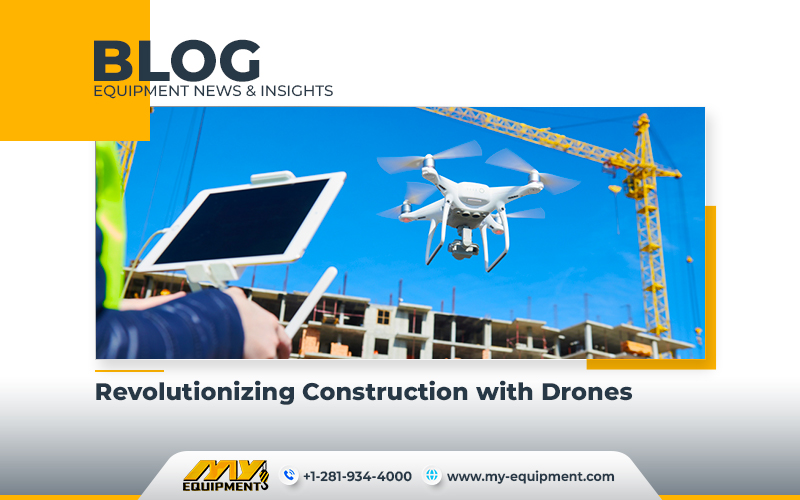For construction, drones have become an indispensable tool, especially in recent years. They have managed to revolutionize the industry by providing real-time insights, streamlining processes, and ensuring quality control. Their quick adoption by contractors can be because of their simplicity, efficiency, and ability to offer a bird’s eye view of worksites. The following are some ways that drones are shaping the construction landscape these days.
Aerial Insights for Progress Tracking
Drones have very quickly become a cornerstone technology for monitoring construction progress. Their ability to capture high resolution aerial imagery offers a simplified and rapid means of observing worksite developments. Project stakeholders can now easily access real time visual updates, promoting better communication and informed decision making.
Precise Surveys
Drone surveying, led by some companies like Propeller, has exceeded expectations in terms of frequency and accuracy. What was initially a monthly endeavor has evolved into a weekly routine due to the value of the data collected. Simply by switching from land based rovers to GNSS-equipped drones, surveyors can now easily and precisely capture topographical data, transforming hours or days of work into a streamlined process.
Transforming Data into Insights
Propeller’s AeroPoints, high-precision smart ground control points, complement drone technology by improving the data accuracy. Geotagged photographs captured during drone flights are transformed into detailed 3D maps using photogrammetry. This transformation allows for meticulous tracking and measurement of every project stage, facilitating applications like volumetrics, road-grade inspections, stockpile measurement, and design conformance checks.
Safety and Cost Savings through Inspections
Drones are championing better safety and substantial cost savings by replacing traditional hazardous inspections. These unmanned aerial vehicles navigate and inspect hard-to-reach areas, identifying issues that might otherwise remain unnoticed. The cost effectiveness of drone inspections is highlighted by their ability to replace expensive alternatives like scaffolding, minimizing expenses while maximizing safety.
Quality Control and Accurate Assessments
Drones are revolutionizing quality control by enabling on the spot assessments. Overlays of scale images created through drone photogrammetry can be superimposed on AutoCAD foundations drawings, revealing discrepancies and errors. This proactive approach ensures that projects align with their intended designs and all the construction equipment on site is working well. This also allows for early intervention to rectify any deviations.
Collaborative Learning and Continuous Improvement
Companies like Skanska are capitalizing on the collective knowledge of their drone pilots. In house training fosters a collaborative community that supports one another’s growth and proficiency. This approach ensures that drone pilots are certified, confident, and well equipped to manage various scenarios, contributing to better drone deployment.
Adapting and Outsourcing for Specialized Needs
Skanska’s strategy of adapting and outsourcing for specialized drone capabilities helps to ensure flexibility and adaptability. In situations requiring unique features or flying abilities, collaborating with external drone providers ensures that you have access to the latest technology. This approach underscores the importance of staying current and embracing innovations to remain competitive in the ever evolving construction landscape.
Safe and Effective Drone Operation
Safe drone operation is very, very important and adhering to key practices ensures successful flights.
Prioritize Battery Life. If encountering low battery warnings, return the drone to base instead of risking flight continuation.
Plan Adequate Time. Unforeseen factors like weather or airspace restrictions can lead to delays, so allocate ample time for each flight.
Be Prepared to Manually Fly. Despite automated flights, drone pilots should be ready to manually control the drone in unexpected situations.
Maintain Altitude. Flying at least 50 feet above the highest object in the flight path minimizes risks.
Regular Site Checks. Continuously assess the worksite for changes that could impact flight safety and success.


 1400 Broadfield Blvd, Houston, TX 77084,
USA.
1400 Broadfield Blvd, Houston, TX 77084,
USA.